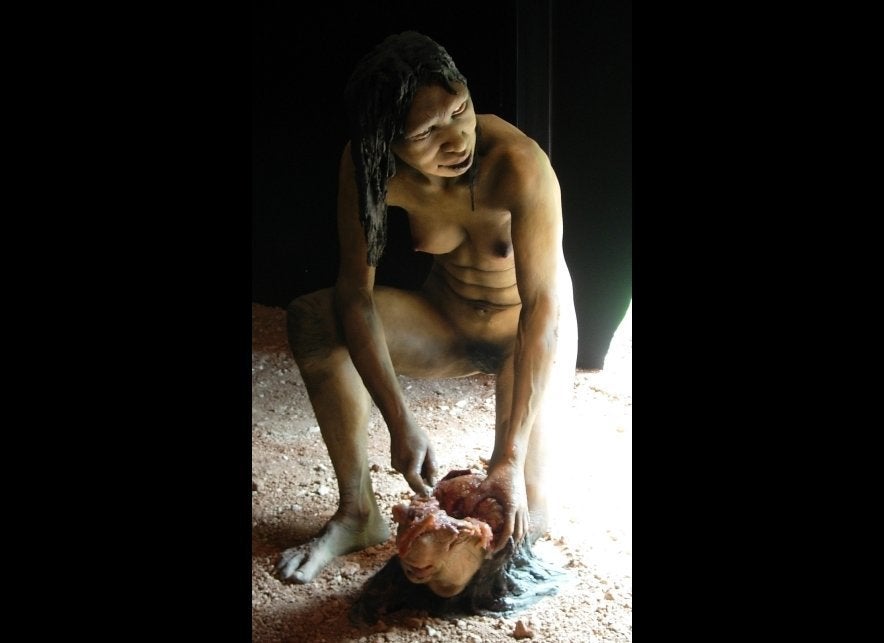There's no doubt that cannibalism is simultaneously fascinating and repulsive. Hearing survival stories makes us question whether we could eat the flesh of our fallen companions, like the Donner party was forced to do in February of 1847. Choosing to eat human flesh is even more unfathomable, as Jeffrey Dahmer did to many of his 17 victims between 1978 and 1991.
Apparently, cannibalism is alive and well today. Right here in the United States, just this past winter, a man allegedly killed another man with an axe, ate his brain, and washed it down with some sake. And in one of only eight documented cases of self-cannibalism in the world, a New Zealand man recently and quite methodically removed his own finger with an electric saw, cooked it in a pot with vegetables, and served it up for dinner.
Ever the science geek, this got me thinking, is eating people dangerous? Nutritional? Healthy? What actually happens, physiologically, when human flesh is consumed? To learn more about cannibalism and it's dangers, watch the video above and/or click the link below. And check out the included slideshow to see depictions of cannibalism throughout history. As always, don't forget to leave a comment at the bottom of the page. Talk nerdy to me!
Hi everyone. Cara Santa Maria, here. There's no doubt that cannibalism is simultaneously fascinating and repulsive. Hearing survival stories makes us question whether we could eat the flesh of our fallen companions, like the Donner party was forced to do in February of 1847. Choosing to eat human flesh is even more unfathomable, as Jeffrey Dahmer did to many of his 17 victims between 1978 and 1991.
That is so creepy. What's worse, cannibalism is alive and well today. I recently read an article about one Brazilian man and two women who were arrested for making empanadas out of their murder victims. In 2008, six Russian teenagers killed and ate four people, but not before cooking them in a bonfire. And last year in Pakistan, two men confessed to digging up dead bodies and cooking them in curry. Right here in the United States, just this past winter, a man allegedly killed another man with an axe, ate his brain, and washed it down with some sake. And in one of only eight documented cases of self-cannibalism in the world, a New Zealand man recently and quite methodically removed his own finger with an electric saw, cooked it in a pot with vegetables, and served it up for dinner.
Ever the science geek, this got me thinking, is eating people dangerous? Nutritional? Healthy? What actually happens, physiologically, when human flesh is consumed? Well, from what I can gather, cannibalism in and of itself isn't particularly harmful. Meat is meat, no matter where it comes from, I suppose.
The real danger comes about if the person you attempt to ingest happens to be infected with prions, which lead to a class of diseases called transmissible spongiform encephalopathies. A prion is a bizarre infectious agent. Unlike other things you can catch that make you sick, like bacteria, viruses, parasites, or fungi, prions don't have genetic material and aren't really alive. Actually, they're proteins that are misfolded, and when they infect a healthy organism, they cause its normal proteins to start misfolding as well, leading to a sort of chain-reaction. And this mostly happens in the brain. Eventually, the prions will eat holes in the tissue, causing a characteristic swiss cheese appearance. Thus the name transmissible spongiform encephalopathy. Transmissible, meaning that it's highly infectious. Spongiform, literally meaning a form that looks like a sponge. And encephalopathy comes from pathy, or disease, and encephalo, meaning inside the head (as in the brain).
Prion infection is untreatable and always fatal. It leads to painful neurodegeneration, resulting in dementia and ataxia, or uncoordinated and uncontrolled muscle movements. This can be seen in a common manifestation of prion disease, bovine spongiform encephalopathy, or mad cow disease. Mad cow spreads when animals eat infected tissue, but it can also occur spontaneously, and it may be passed down genetically. And we can get a human variant if we eat beef that's infected with mad cow. Although the concentration of prions is highest in the brain and spinal cord, they can be found in blood, muscle, and even bone. And cooking the meat does nothing to destroy the prions. Whether it be cow or human flesh, spongiform encephalopathies are still highly contagious even when served well-done.
Creutzfelt-Jacob disease is the most common human prion disease, but it's still relatively rare, affecting only one in one million people. It usually comes about via a random mutation, through familial inheritance, or by grafts or transfusions from an infected individual. Cannibalism is more often associated with a disease known as kuru, first described in Papua New Guinea in the 1950s. There, the Fore tribe practiced ritualistic cannibalism, eating the brains of recently deceased relatives in an effort to capture their "life force." And although the practice was halted by the 1960s, the last reported kuru death was in 2005. Prion incubation periods can span anywhere from 5 to 40 years, during which a person has no symptoms. But during its acute phase, kuru comes on with a vengeance, causing whole-body tremors. Within six to eighteen months, kuru victims die.
There is no cure for prion disease, and it seems like a terrible way to go. So, just to be on the safe side, take my advice: Don't eat people, especially not their brains.
Thoughts? Hit me on up Twitter, Facebook, or leave your comments right here on The Huffington Post. Come on, Talk Nerdy To Me!
CORRECTION: The video states that "three Brazilian men...were arrested for making empanadas out of their murder victims." In fact, the accused individuals are one man and two women.
See all Talk Nerdy to Me posts.
Like Cara Santa Maria on Facebook.
Follow Cara Santa Maria on Twitter.
